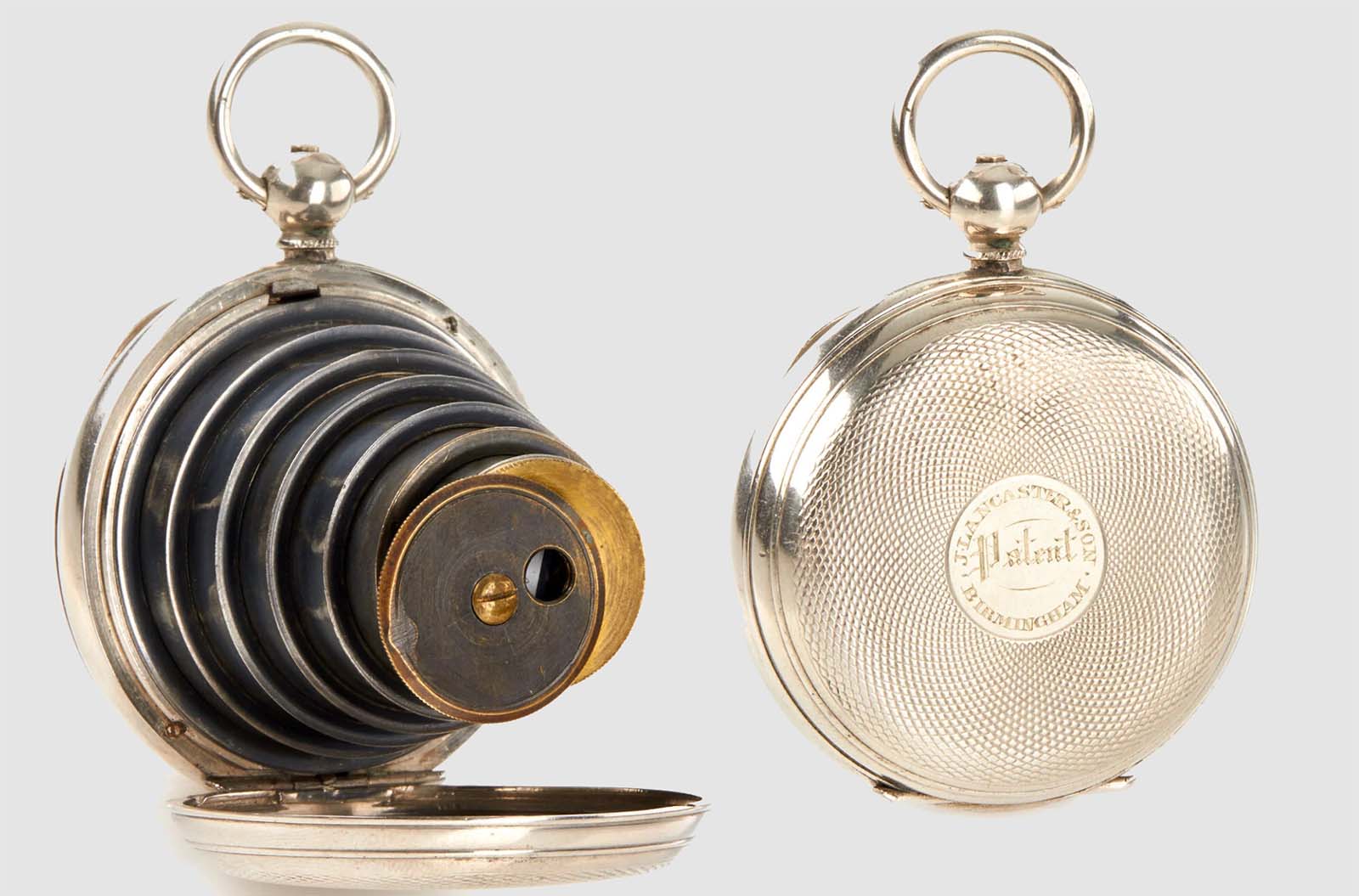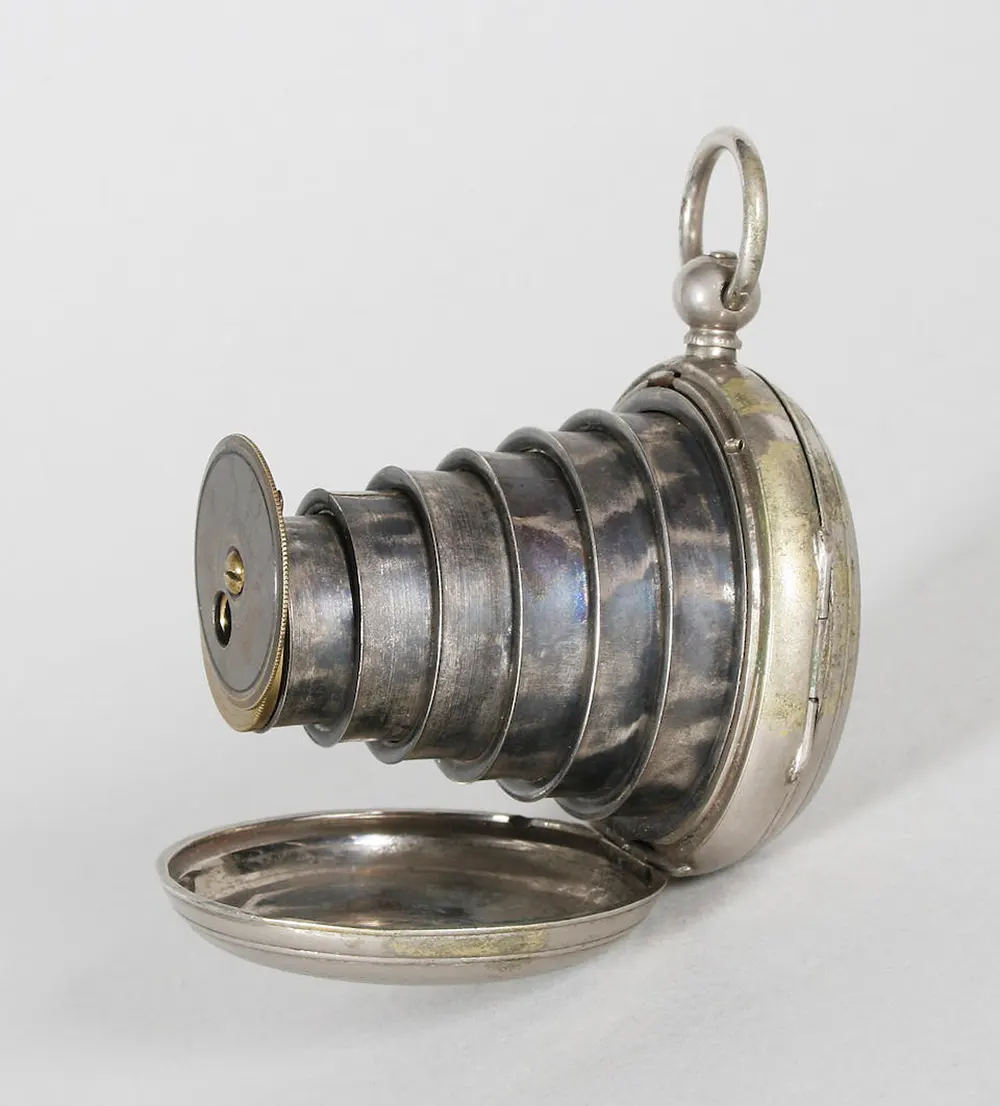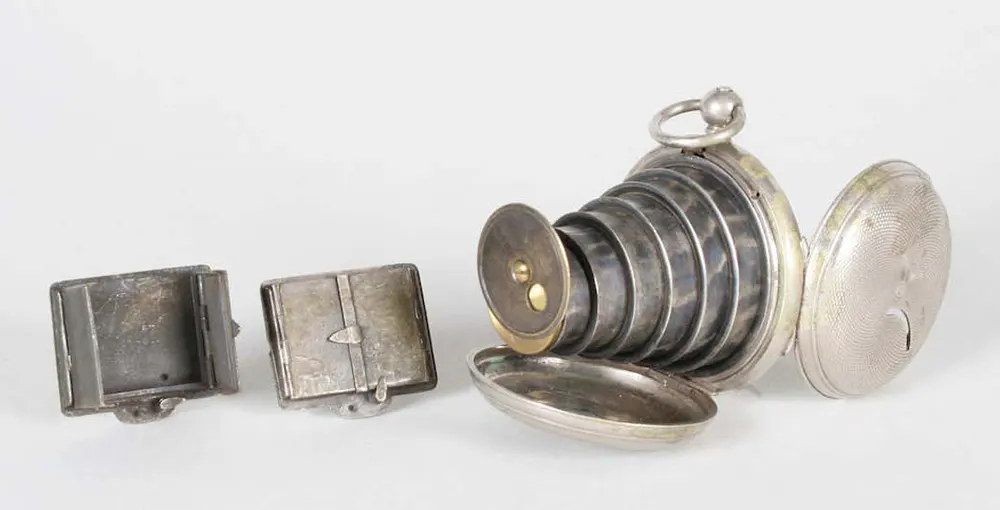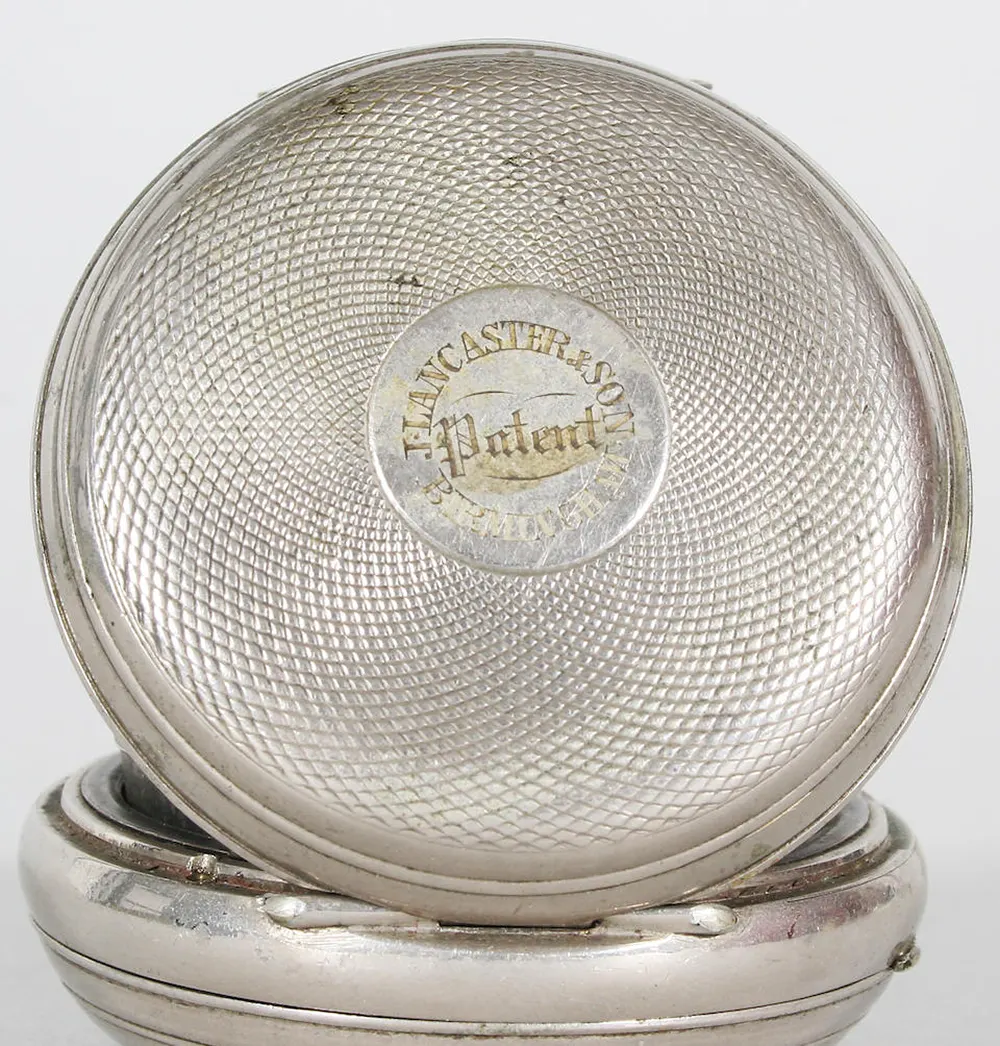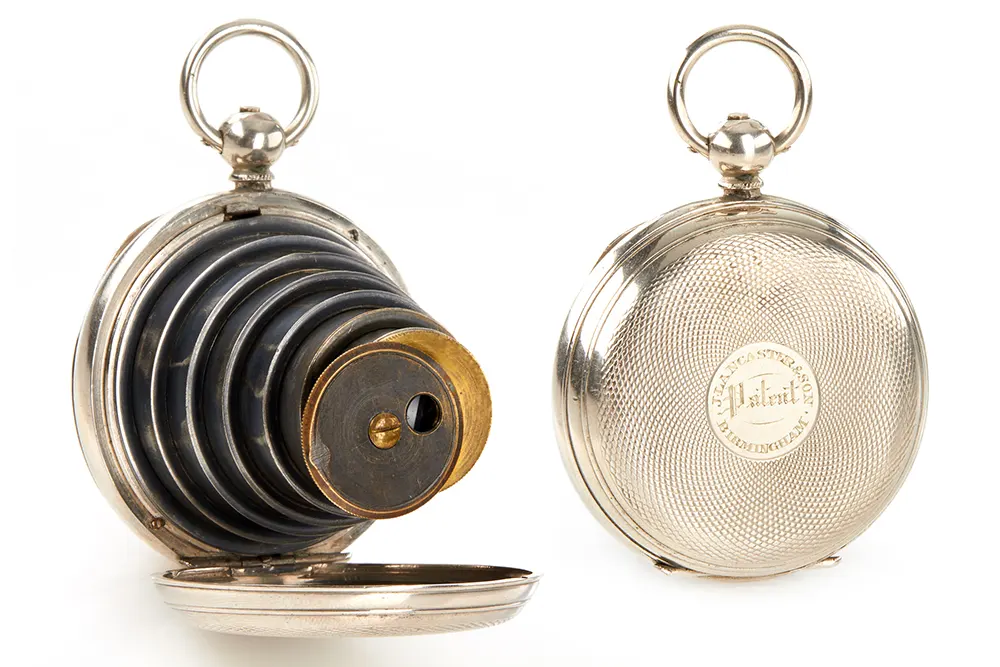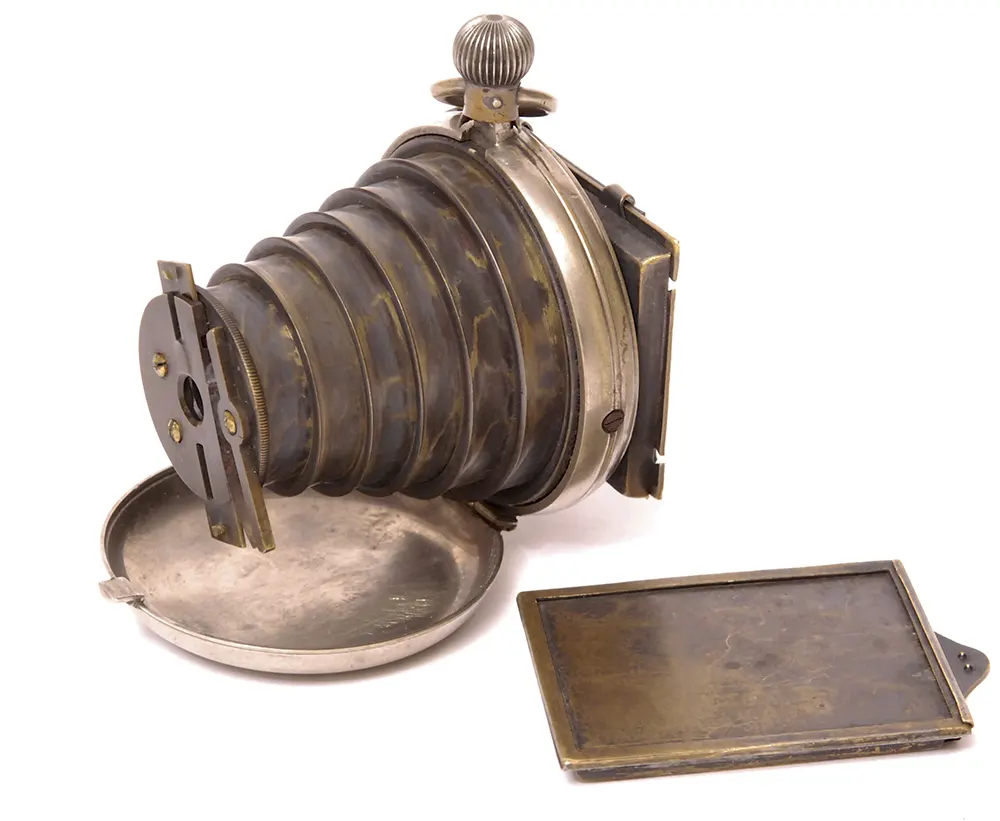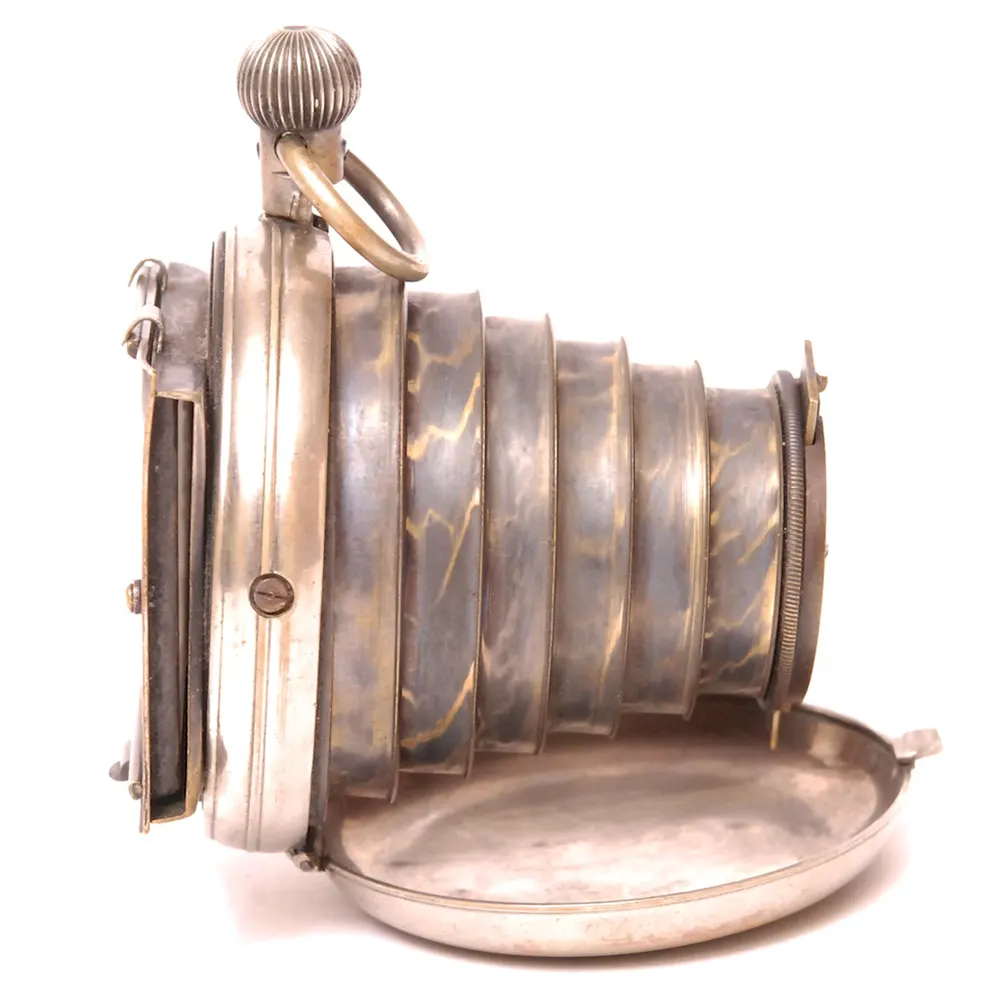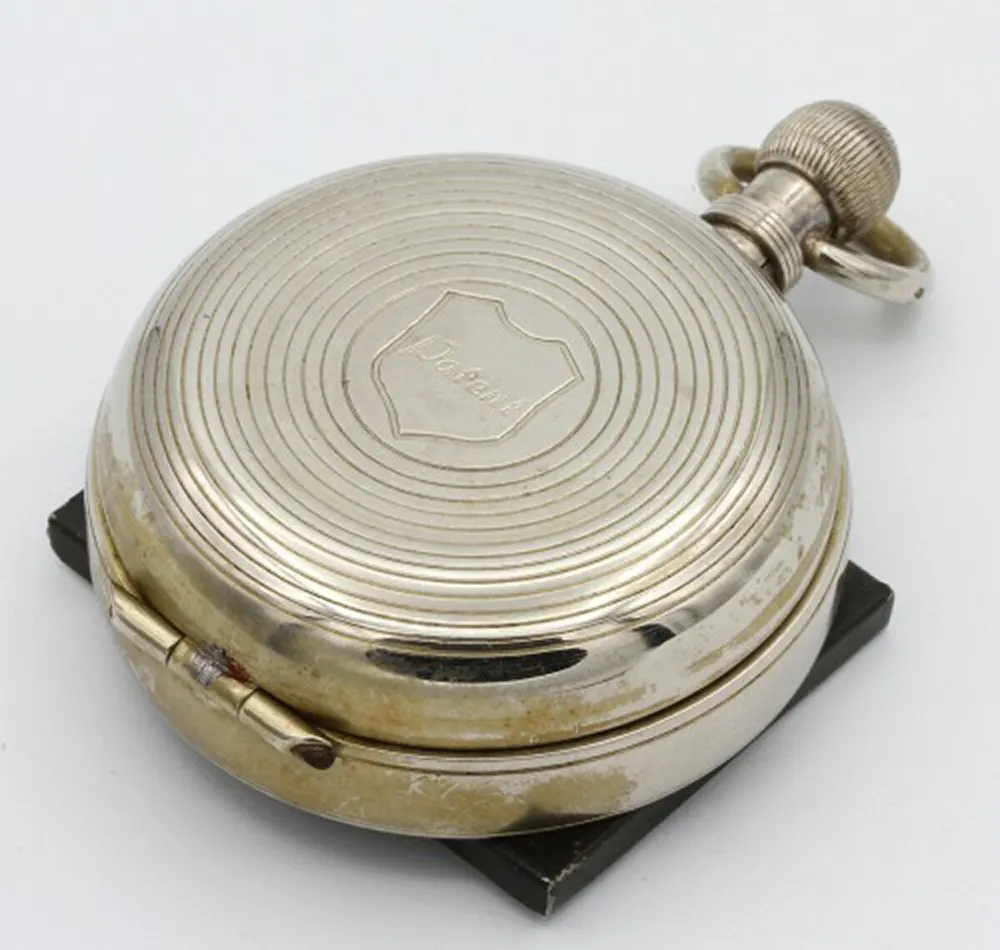The watch was crafted by J. Lancaster & Son of Birmingham and produced between 1886 and 1900. The production spanned various models, beginning with a version tailored for men before introducing a more petite edition designed for women. These pictures feature the women’s version of the Lancaster watch camera, a rarer and smaller model. This unique piece sold for a remarkable $36,000 at a Bonhams auction in 2007. Only four of these are known to exist, not because they were challenging to create, but because they proved to be quite tricky to use effectively. Constructed from metal with nickel plating, this device was cleverly made to resemble a pocket watch and could be easily carried in a waistcoat pocket. What’s fascinating is that it was a self-erecting camera. When opened, it extended six spring-loaded tubes to create the bellows for the camera. It had an internal meniscus lens and either a simple rotary shutter in early versions or a drop shutter in later models. According to Bonhams auction house: J. Lancaster & Son Birmingham in the form of a nickel plated, engine turned, hunter type pocket watch case, the front opening to reveal the internally sprung six section telescopic lens tubes with internal meniscus lens and front mounted simple, hand turned, rotary shutter, the rear case revealing a removable 1 x 1 1/4 inch ground glass viewing screen. The case front with external roundel engraved ‘J Lancaster & Son Patent Birmingham.’ and together with two sensitised material holders. The camera, made from 1887, would be very inconvenient in use, the ground glass screen having to be removed by releasing four very small catches and fitting a metal sensitized material holder for each exposure, the front of this having sprung doors opened by a sliding lever protruding through a slot in the rear watch casing. To address this difficulty an improved camera was introduced in 1890 which had a large screen frame and more conventional dark slides instead of the rear watch casing, thus destroying the appearance of a normal watch when closed. A drop shutter was also fitted. The ladies’ version of the camera, when operational, produced exposures measuring 1 1/4 inches by 1 inch, while the larger model for men captured snapshots measuring 2 inches by 1 1/2 inches.
(Photo credit: Bonhams.com / antiq-photo.com /Pinterest / Wikimedia Commons). Notify me of new posts by email.
Δ Subscribe
